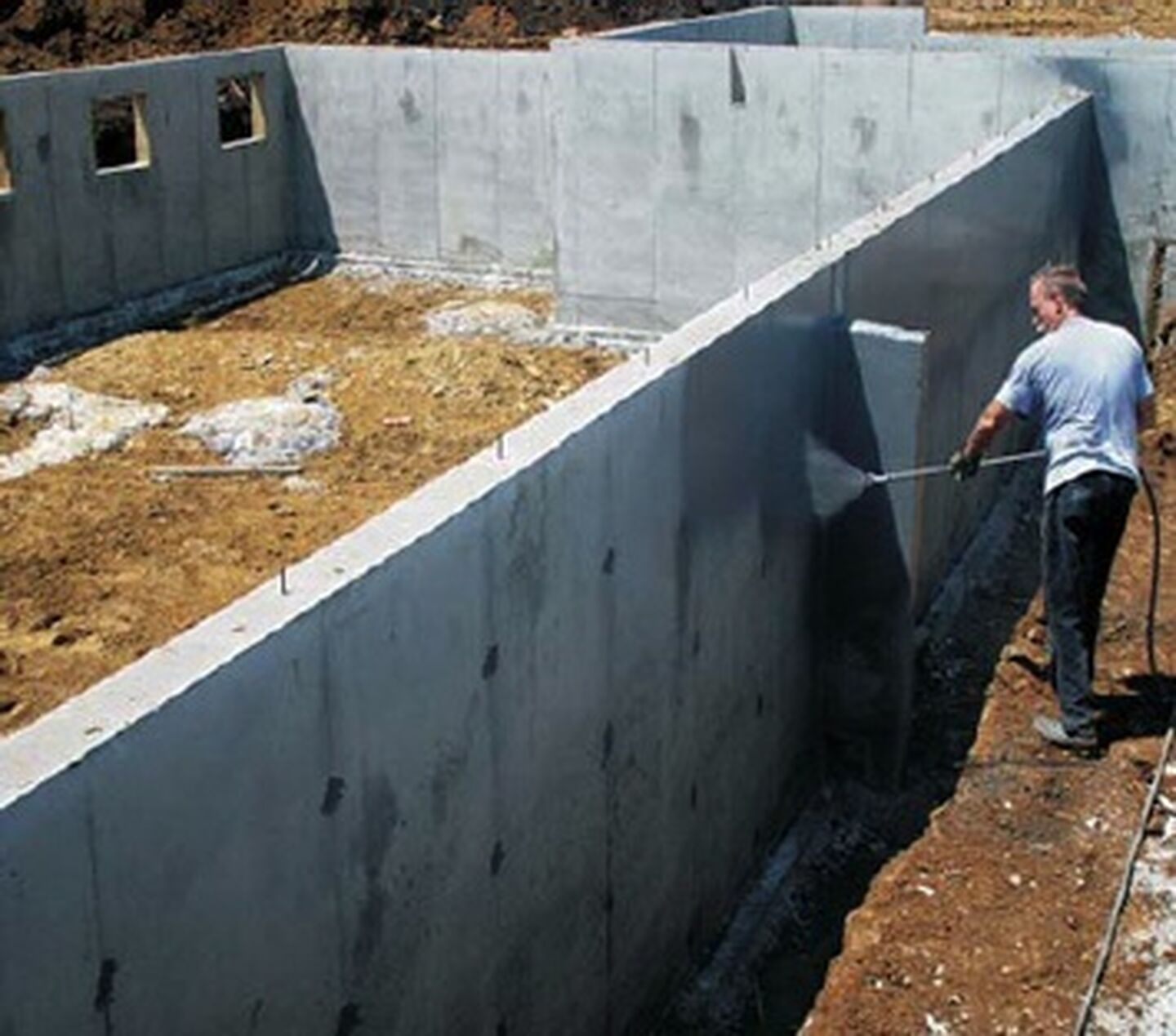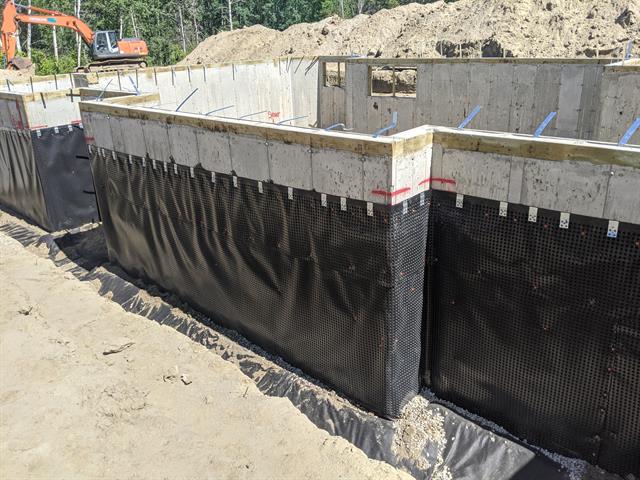How it works when you hire a mould treatment newcastle expert
Discovering the Various Strategies and Solutions for Effective Damp Proofing
Dampness in structures postures significant difficulties to both architectural honesty and indoor air top quality. Various techniques and services have actually emerged to combat this prevalent concern. From typical damp-proof membrane layers to cutting-edge chemical therapies, each method uses unique advantages. Recognizing these choices is necessary for effective wetness control. Picking the appropriate service depends on certain building conditions and needs, motivating additional exploration into the most effective moist proofing methods offered.
Comprehending the Root Causes Of Wetness
Although wetness can occur from different sources, understanding these reasons is essential for efficient removal. Commonly, wetness originates from 3 key sources: rising damp, permeating wet, and condensation. Rising wet occurs when groundwater takes a trip up with porous products, such as brick or rock, usually due to a lack of a reliable barrier (damp removal newcastle). Passing through wet is typically created by outside elements, consisting of roofing leaks, malfunctioning gutters, or harmed wall surfaces, allowing water to infiltrate a property. Condensation, on the other hand, results from excess wetness airborne, typically aggravated by bad ventilation and temperature distinctions, bring about water beads basing on surfaces. Identifying these underlying concerns is necessary, as each sort of wetness calls for a tailored approach for removal. Proper evaluation helps in identifying one of the most efficient remedies, ultimately securing the architectural integrity of a building and enhancing indoor air high quality
Typical Damp-Proof Membranes

Chemical Damp-Proofing Solutions
Chemical damp-proofing services offer an innovative method to avoid wetness invasion in structures. These techniques commonly include the application of liquid chemicals that permeate masonry and form a barrier against rising wet. Generally made use of chemicals include silanes, siloxanes, and other water-repellent agents that react with surface materials to develop a hydrophobic layer.The application procedure normally needs boring openings into the wall surfaces, infusing the chemical option, and enabling it to heal. This method is particularly advantageous for older frameworks where typical damp-proof membrane layers may be impractical. Chemical damp-proofing can be much less turbulent and extra cost-efficient than substantial remodelling projects.While effective, these options depend on correct application and ecological conditions for peak performance. mould treatment newcastle. Normal maintenance and surveillance are necessary to assure the durability of the damp-proofing therapy. Generally, chemical damp-proofing represents a flexible option for securing buildings against moisture-related damages
Cavity Wall Surface Building And Construction Techniques
Dental caries wall building strategies provide many benefits, particularly in moisture control and energy performance. By incorporating an air space in between 2 layers of masonry, these walls successfully mitigate water access while boosting insulation. This mix not just shields frameworks from dampness but likewise adds to minimized energy usage.
Benefits of Cavity Wall Surfaces
When thinking about efficient wet proofing approaches, the advantages of cavity walls stand out prominently. Dental caries wall surfaces consist of two separate layers, developing an air void that properly reduces wetness infiltration. This design reduces the danger of moisture, as the external wall surface works as an obstacle versus rainfall and water access. In addition, cavity walls enhance thermal insulation, which adds to power efficiency by reducing heat loss. They additionally give audio insulation, aiding to develop a quieter interior environment. The air void permits for air flow, which aids in dampness control and reduces the likelihood of mold and mildew development. These benefits not just boost the general comfort of a building however also contribute to its durability and structural integrity.
Dampness Control Methods
Efficient dampness control methods are vital in cavity wall building and construction to ensure lasting defense versus moisture. One key approach entails the incorporation of weep openings, which facilitate water drainage from the dental caries, preventing build-up. In addition, the use of breathable membrane layers can assist manage wetness degrees while allowing caught vapor to run away. Proper positioning of insulation is likewise crucial, as it must not block drainage paths. In addition, making certain that the outer leaves of the tooth cavity wall are created with water-resistant materials improves overall durability. Regular maintenance checks are vital to determine any obstructions or damages early, securing the framework's honesty. Inevitably, a mix of these strategies creates a durable protection versus wetness invasion in tooth cavity walls.
Insulation and Energy Effectiveness
Insulation plays a crucial duty in improving energy effectiveness within cavity wall building and construction. By including insulating materials, these walls produce a thermal barrier that lessens warmth loss and reduces energy consumption. Effective insulation not just aids preserve a stable interior temperature yet also mitigates the threat of dampness, as it protects against condensation within the wall cavity. Various techniques, such as making use of stiff foam boards or mineral wool, can be utilized to accomplish suitable insulation performance. In addition, appropriate setup is vital to ensure that voids and gaps are minimized, which can or else endanger energy performance. Inevitably, a well-insulated cavity wall adds greatly to total sustainability and decreases cooling and heating costs for house owners.
Exterior Damp Proofing Approaches
Exterior moist proofing methods are crucial for shielding structures from moisture seepage. Two efficient techniques include the application of water resistant membranes and the installation of French drains pipes. These services aid reduce water build-up and maintain the integrity of buildings.
Waterproof Membrane Application
While different methods exist for avoiding moisture ingress, the application of water-proof membranes continues to be a highly effective exterior wet proofing technique. These membrane layers are normally made from materials such as polyethylene, rubber, or modified bitumen, providing a durable obstacle versus water penetration. The setup procedure includes using the membrane layer to the external surface areas of wall surfaces or foundations, making sure full protection to avoid leaks. Appropriate adhesion and securing at joints are read more critical to making best use of effectiveness. Water resistant membranes can be applied in various types, consisting of fluid finishings and sheet membranes, enabling for flexibility based upon the particular needs of the framework. This approach not only secures structures from moisture however additionally boosts their long life and structural stability.
French Drainpipe Installment
One efficient method for managing groundwater and stopping moisture buildup around a structure's structure is the setup of a French drain. This water drainage system includes a trench full of gravel and a perforated pipe that reroutes surface area water far from the structure. Appropriate installation needs cautious planning, making certain that the drainpipe slopes far from the framework to promote perfect water circulation. Additionally, the place of the drain is vital; it must be positioned in areas susceptible to pooling or excess wetness. Normal upkeep, consisting of cleaning particles from the gravel and making certain the pipe continues to be unhampered, is vital for lasting performance. Ultimately, a well-installed French drainpipe can considerably decrease the risk of water-related issues in structures and basements.
Interior Waterproofing Methods
Inside waterproofing approaches are vital for securing a building's inside from moisture infiltration and prospective water damage. These methods generally involve the application of customized materials and strategies made to develop a moisture obstacle within the framework. One typical method is making use of water-proof finishings or sealers on walls and floors, which protect against wetness from passing through surfaces.Additionally, installing interior water drainage systems, such as sump pumps, can efficiently take care of water buildup in basements and creep areas. Another method involves using vapor obstacles, which are installed to hinder dampness motion from the ground right into living spaces.Moreover, attending to any kind of cracks or spaces in walls or structures with appropriate sealers ensures a complete defense against water invasion. By implementing these indoor waterproofing strategies, building owners can considerably reduce the risk of mold development, structural damages, and other moisture-related concerns. Correct implementation of these methods is necessary for long-term security and structure integrity.
Routine Upkeep and Evaluation Practices
Routine maintenance and inspection practices are essential for assuring the long-term performance of wet proofing remedies in any kind of structure. Regular checks allow home proprietors to recognize very early signs of dampness breach, such as peeling paint, mold development, and stuffy smells. These indicators can signal underlying concerns that need immediate attention.Inspections need to be carried out at least each year, focusing on at risk locations like cellars, creep areas, and exterior wall surfaces. During these analyses, residential property proprietors ought to take a look at sealers, drainage systems, and ventilation to validate they function correctly.Additionally, preserving gutters and downspouts is vital, as blocked systems can bring about water buildup near the foundation. Applying a routine upkeep routine, in addition to timely fixings, can considerably expand the life expectancy of wet proofing measures and protect the architectural stability of the building. Aggressive procedures ultimately add to the overall health and wellness of the living atmosphere.
Regularly Asked Questions
Exactly How Lengthy Does Damp Proofing Usually Last?
The period of damp proofing performance differs, typically lasting between 20 to half a century. Variables such as application quality, environmental problems, and upkeep techniques significantly affect the long life of the moist proofing therapy.

Can I Damp Proof My Home Myself?
The specific contemplated the usefulness of DIY damp proofing. With correct study and the ideal materials, it is possible. However, they additionally acknowledged the value of professional guidance to assure resilient effectiveness and stop future problems.
What Are the Indicators of Ineffective Damp Proofing?
Indications of inadequate damp proofing consist of consistent musty smells, visible mold and mildew growth, peeling off paint, moist spots on wall surfaces, and wood degeneration - mould treatment newcastle. Home owners ought to attend to these concerns quickly to stop more damage and health issues
Does Damp Proofing Affect Indoor Air High Quality?

Exactly How Much Does Specialist Damp Proofing Cost?
Specialist damp proofing costs differ considerably, commonly ranging from $1,000 to $5,000 relying on the building's dimension, the level of the wet issue, and selected methods. Each scenario needs a customized analysis for precise rates. Commonly, wetness originates from 3 key resources: rising wet, permeating damp, and condensation. When considering reliable moist proofing approaches, the benefits of dental caries walls stand out prominently. Exterior wet proofing approaches are vital for shielding frameworks from dampness seepage. While various approaches exist for preventing wetness ingress, the application of water-proof membranes remains a highly efficient external moist proofing method. Indications of ineffective moist proofing include consistent moldy odors, visible mold development, peeling paint, moist spots on walls, and timber decay.